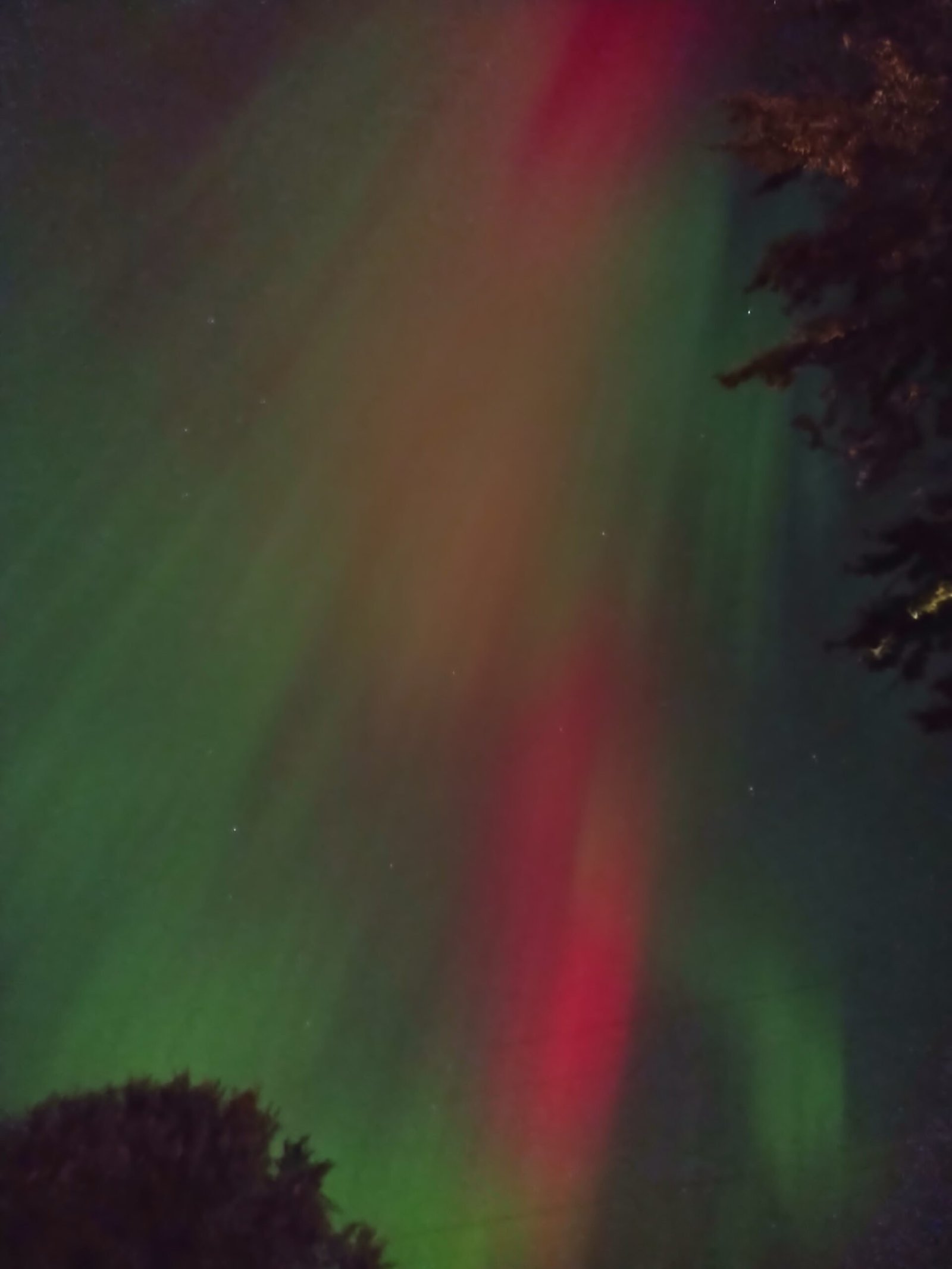Solar Flare or CME?

*northern lights photographed by Marion J Chard 10-10-2024
With the recent flux of aurora, I’m sure many of you have heard the use of two terms: solar flare and coronal mass ejection (CME). While both reach Earth and can produce auroras, they are not to be confused with one another.
Auroras are brilliant ribbons of light weaving across Earth’s northern or southern polar regions and these natural light shows are caused by magnetic storms that have been triggered by solar activity, such as solar flares (explosions on the Sun) or coronal mass ejections (ejected gas bubbles). Energetic charged particles from these events are carried from the Sun by the solar wind.
When these particles seep through Earth’s magnetosphere, they cause substorms. Then fast-moving particles slam into our thin, high atmosphere, colliding with Earth’s oxygen and nitrogen particles and as they shed their energy each atom starts to glow in a different color, thus producing those glorious curtains of light.
To understand the difference, watch this brief video, created by NASA.

Leave a Reply
You must be logged in to post a comment.